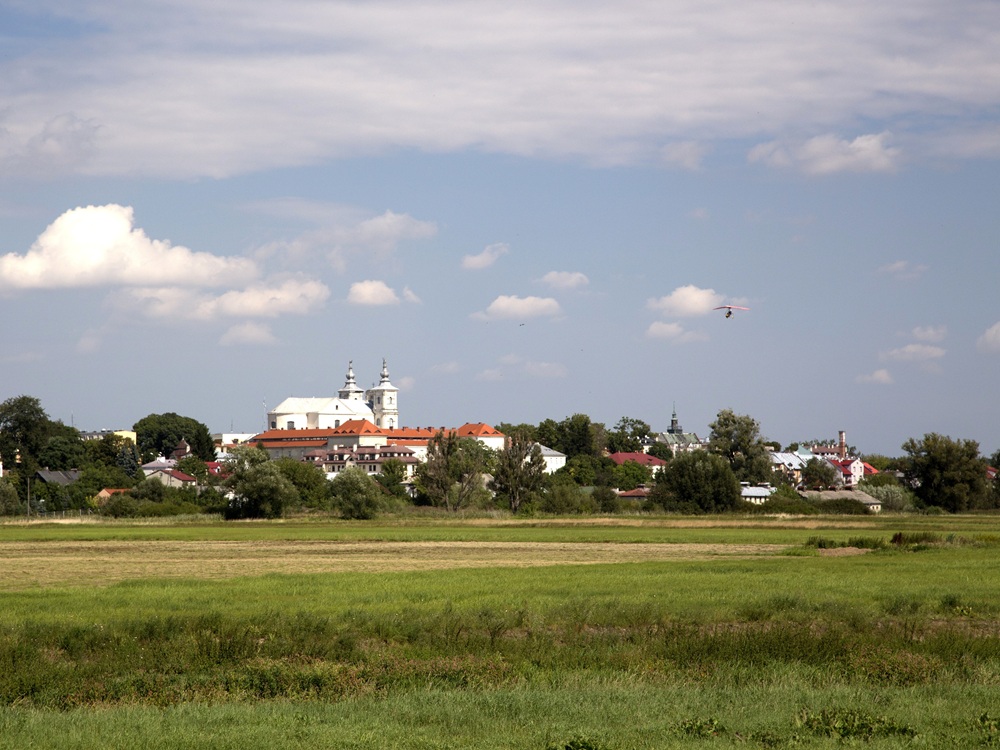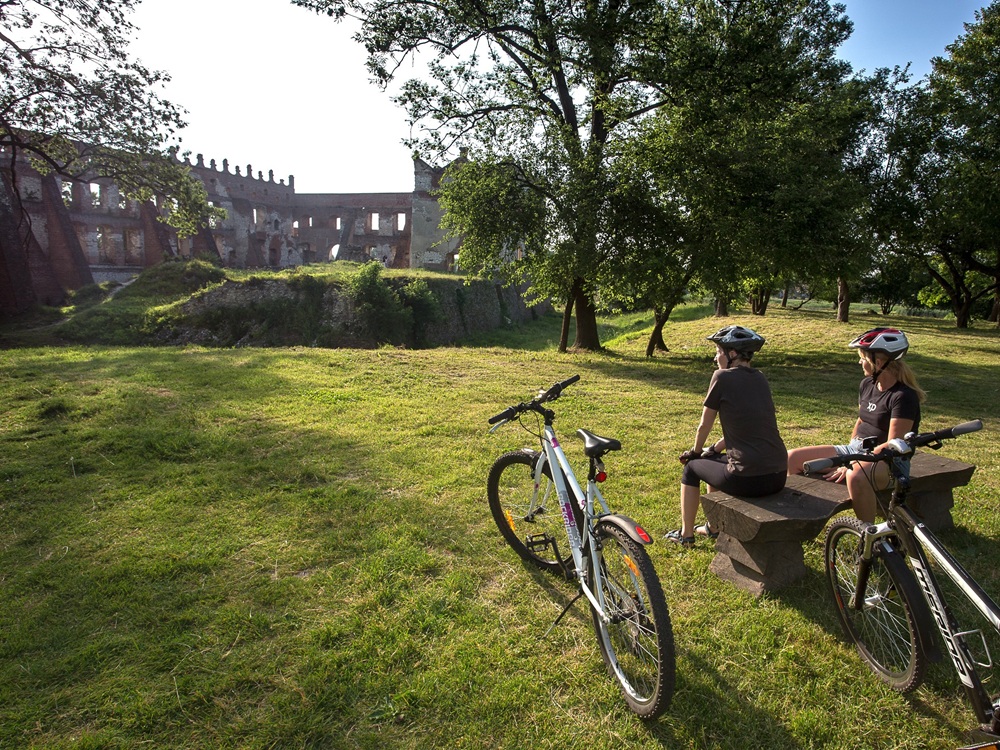What is worth seeing in Krasnystaw? Let us tell you! Situated on the Wieprz River, Krasnystaw boasts a fascinating history. In the 15th and 16th centuries, an important trade route connecting east and west passed through the town. One of its most valuable historic landmarks is the Baroque Church of St Francis Xavier, dating from the turn of the 17th and 18th centuries. The former Jesuit college building adjacent to the church now houses the Regional Museum. A short distance away lies the historic church and monastery complex formerly belonging to the Augustinians.
Another noteworthy site is the 1923 building originally constructed for the former regional assembly, now serving as the seat of the city authorities. The "kneeling tree" from Krasnystaw was named Polish Tree of the Year in 2018. This 66-year-old ash-leaved maple, with its trunk bending towards the ground and then rising skywards, symbolises hope that refuses to give in. Every August, the town hosts the nationwide Hop and Brewers’ Festival – Chmielaki Krasnostawskie. In 2024, the event was awarded the title of Best Tourist Product of the Lublin Voivodeship in a competition organised by the Lublin Regional Tourist Organisation.

The picturesque area near Krasnystaw, encompassing the municipalities of Gorzków, Rudnik and Żółkiewka, is known as the Kraszczady. It captivates with its landscape of rolling hills, ravines and forests. It's an excellent destination for hiking, cycling and horse riding, and in winter – perfect for cross-country skiing.

To the southeast, the town borders the Skierbieszów Landscape Park – a picturesque area criss-crossed by numerous ravines and gorges.
Near Krasnystaw, in the village of Krupe, lie the ruins of the Renaissance Orzechowski Castle, dating back to the late 16th century. Remnants of the once magnificent structure include tall walls with window openings supported by buttresses and topped with an attic, partially preserved sgraffito decorations, fragments of bastions, and traces of moats. The castle is the subject of a legend about a figure in a kontusz who appears on foggy evenings. According to the tale, the ghost circles the walls until it eventually vanishes into them. He is said to be a guardian watching over great treasures hidden within the ruins. We definitely recommend visiting during the day. You can reach the site via the Lublin Renaissance Route or the East of Poland Cycling Trail Green Velo.

One of the oldest and largest pyramids in Poland is located in the Lublin region. It is an Arian burial site situated on a wooded hill near the village of Krynica. The nearly 20-metre-high structure was probably built in the 17th century – much earlier than the better-known pyramidal tomb in Rapa, located in the Warmian-Masurian Voivodeship. The stone-and-brick mausoleum contains an inner crypt. An entrance secured with an iron grate leads inside. Circular openings on three of the necropolis walls serve as windows. This intriguing monument is the resting place of the wealthy Calvinist Piotr Orzechowski – owner of the 16th-century Renaissance castle in nearby Krupe.
Impressive loess ravines can be found not only near Kazimierz Dolny, Nałęczów or Szczebrzeszyn, but also in the vicinity of Krasnystaw. To see them, take a walk along the nature trail in the Wodny Dół Nature Reserve. The trail begins at the edge of the forest near the villages of Jaślików and Niemienice Kolonia.
Nearby towns and places:
Fajsławice | Herbal Land of the Lubelskie Region
Krupe | The Ruins of the Renaissance Castle of the Orzechowski Family
Krynica | One of the oldest and largest pyramids in Poland
Traditional May Picnic with Carp in the Kraszczady Region (May)
Nationwide Hop and Brewers’ Festival – Chmielaki Krasnostawskie (August)




